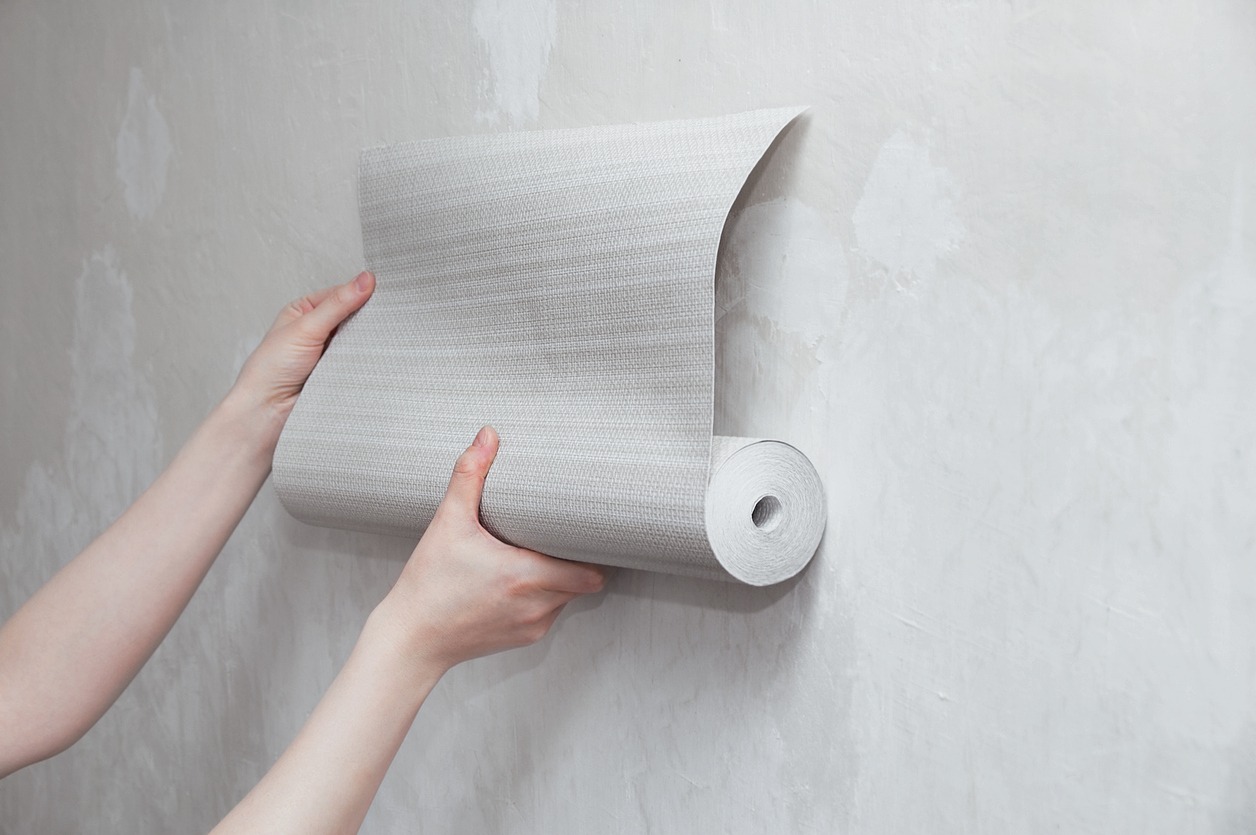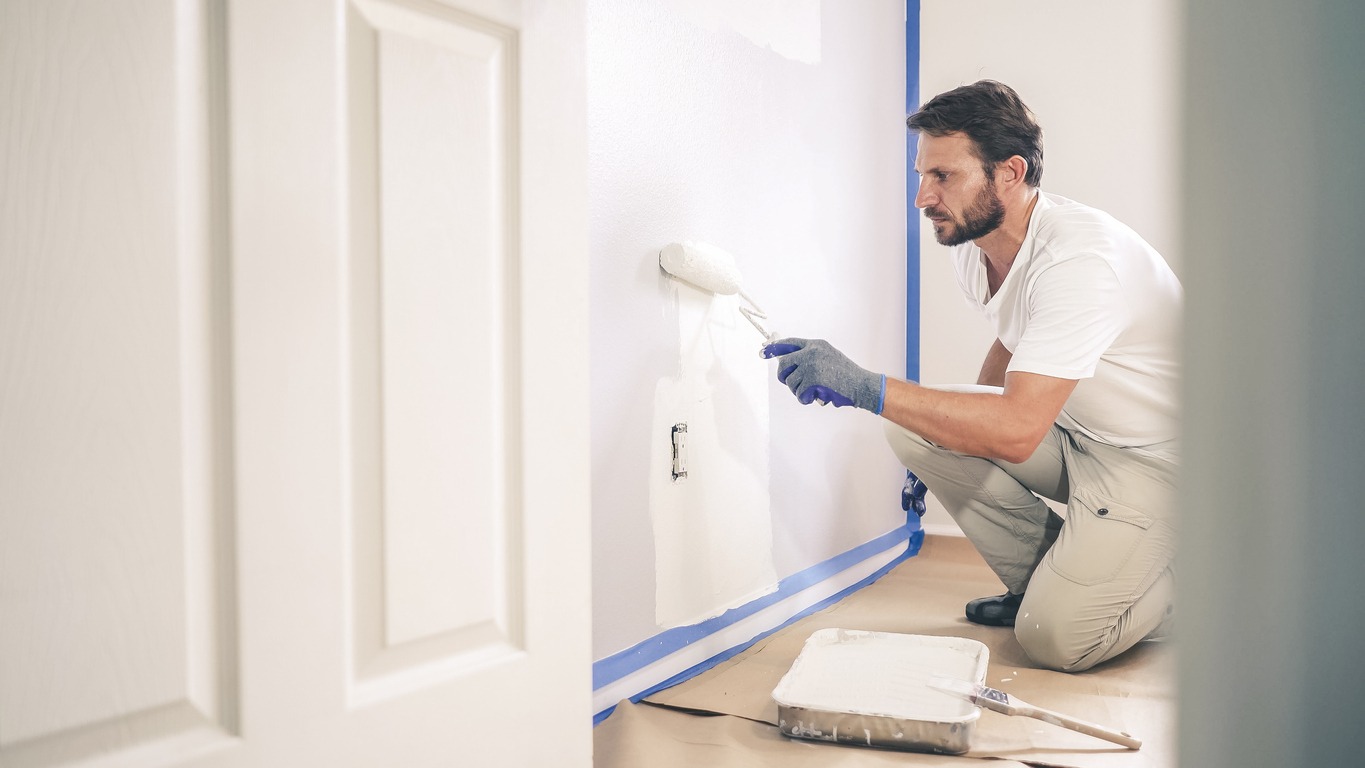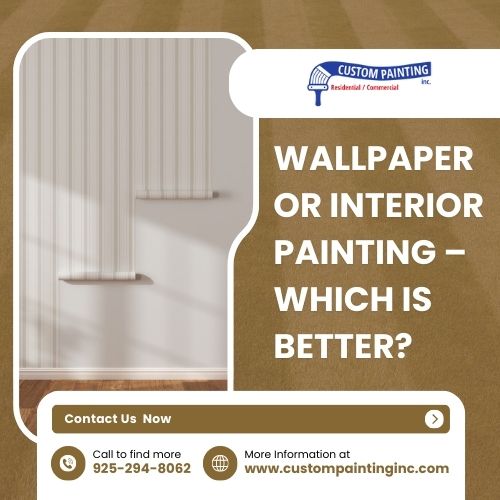Decorating your interior space can be a fun and rewarding project. It allows you to express your creativity, personalize your space, and experiment with colors, textures, and layouts to create an environment that reflects your style.
Deciding between wallpaper and interior paint is essential in defining a room’s look and feel. Both options offer unique benefits—wallpaper provides texture and intricate patterns, while paint allows for versatility and ease of change. The right choice often depends on your goals, budget, and style preferences. Consulting with a commercial painting company can be invaluable in guiding homeowners and businesses to make the best choice for their interiors.
Pros and cons of interior painting
Pros of interior painting
- Versatility in color and finish: Paint offers various colors and finishes, like matte, satin, and gloss, allowing for extensive customization to match any style.
- Ease of application and refreshing: Painting is relatively quick to apply and can be easily refreshed or changed as tastes evolve.
- Cost-effectiveness: Compared to wallpaper, painting is often a more affordable option, especially for large commercial spaces or frequent changes.
- Durability with proper care: High-quality paint can be durable and easy to maintain, making it a practical choice for residential and commercial environments.
Cons of interior painting
- Limited texture and design options: Paint lacks the depth and texture options that wallpaper or other wall treatments offer, potentially limiting design possibilities.
- Visible wear over time: In high-traffic areas, paint may require frequent touch-ups or repainting to maintain a fresh look.
Pros and cons of wallpaper

Wallpaper offers unique advantages and some limitations to consider:
Pros of wallpaper
- Variety in patterns and textures: Wallpaper provides a wide range of intricate patterns, textures, and finishes that are difficult to achieve with paint, allowing for more personalization.
- Enhanced durability: High-quality wallpaper can last 10-15 years, making it a durable choice, especially suitable for high-traffic commercial spaces.
- Visual impact: Wallpaper can introduce luxury, sophistication, or boldness to a space, ideal for making a strong design statement.
Cons of wallpaper
- Higher upfront cost and installation complexity: Wallpaper is typically more expensive and labor-intensive to install than painting.
- Removal challenges: Wallpaper removal can be difficult and messy, limiting flexibility for clients who want to update their decor frequently.
- Susceptibility to moisture damage: Wallpaper may not be suitable for humid environments, as moisture can cause it to peel or become damaged.
Comparing practical considerations for each option
Consider the comparison of practical considerations for choosing between interior paint and wallpaper:
- Maintenance and durability: Wallpaper tends to be more durable in high-traffic areas due to its resistance to scuffs and scratches, making it a good choice for hallways or busy family rooms. However, it is less ideal in moisture-prone areas like bathrooms and kitchens, where humidity can cause peeling or bubbling. Paint, while more susceptible to wear, is easier to clean and maintain in such environments.
- Ease of updating: Paint allows for easy and frequent updates, as color changes or touch-ups can be done quickly with minimal investment. In contrast, updating wallpaper requires more effort, as removal can be labor-intensive, and reinstallation often incurs higher costs.
- Aesthetic goals: Paint offers a clean and minimalist aesthetic, suitable for those looking for simplicity or a uniform color scheme. Wallpaper, however, opens the door to more creative expression, allowing for unique textures, patterns, and intricate designs that can make a room more distinctive.
- Time and cost factors: Painting is generally faster and more economical, especially for large-scale projects. Wallpaper installation typically takes longer due to precise alignment and preparation requirements, often resulting in higher costs, particularly with more elaborate designs or custom patterns.
Choosing between these options depends on the specific needs, environment, and design goals of the space.
Best situations for choosing paint over wallpaper

- High-traffic or high-moisture areas: Paint is more resilient in spaces like kitchens, bathrooms, and commercial corridors, where moisture and heavy use are common. Unlike wallpaper, which can peel or warp in humid conditions, high-quality, moisture-resistant paint can withstand steam, spills, and frequent cleaning, making it a practical and durable option for these areas.
- Budget-friendly projects: Paint is an ideal choice for projects on a tight budget or with frequent renovation cycles, as it’s often less costly and easier to apply than wallpaper. It allows quick, affordable updates without the time and labor required to remove and replace wallpaper, making it a great option for budget-conscious projects.
- Flexible or temporary spaces: Paint offers flexibility in spaces that require frequent decor changes, such as retail stores. It can be easily updated to match seasonal decor or branding changes, unlike wallpaper, which requires more effort and expense to replace. Paint provides a quick refresh without committing to a long-term design, making it perfect for adaptable environments.
Best situations for choosing wallpaper over paint
Choosing wallpaper over paint can offer distinct advantages in specific situations:
- Creating a unique, high-impact look: Wallpaper is ideal for spaces where a bold, eye-catching design is desired. In areas like hotel lobbies or executive offices, wallpaper can bring in intricate designs, luxury finishes, and patterns that are challenging to achieve with paint, giving the space a sophisticated, memorable aesthetic.
- Long-term design plans: Wallpaper is a good choice for rooms with a stable design plan, as it is durable and retains its appearance over time. It works well in spaces where the décor is unlikely to change frequently, offering a lasting style solution for home offices, master bedrooms, or upscale retail environments.
- Adding texture and dimension: Wallpaper adds depth and texture, making it suitable for spaces where a tactile feel enhances the design. Embossed, metallic, or textured wallpapers can create a dynamic look in dining rooms, living rooms, or corridors, adding layers of dimension that paint alone cannot provide.
Combining both options for a custom look
Combining paint and wallpaper is a fantastic way to create a unique, custom look in any space! Here are a few ideas to get you started:
- Accent walls: Using wallpaper on an accent wall adds an instant “wow” factor to a room with painted walls. It’s a great way to bring in patterns, textures, or colors that create depth and visual interest without overwhelming the whole space. Just pick a wall you’d like to highlight—like behind the bed, sofa, or dining table—and let the wallpaper do the talking!
- Patterned borders: Wallpaper borders are a subtle way to add detail without committing to full wallpaper. In rooms with painted walls, a border can bring character to the space. It’s perfect for adding a bit of pattern or texture around the ceiling, along the chair rail, or even around door frames. This technique adds a tailored, polished feel while keeping the overall look soft and simple.
- Mixing textures and colors: Combining painted walls with textured or patterned wallpaper creates a beautiful, layered effect. Imagine rich, matte paint with a metallic or linen-like wallpaper—this contrast adds sophistication and makes architectural features pop. Think of it as adding a little extra “wow” to corners, nooks, or alcoves, highlighting what’s unique about your space.
Using both paint and wallpaper offers the best of both worlds, giving you endless possibilities to create a home that feels personal, stylish, and full of character!
Parting words
Both wallpaper and paint offer unique strengths: wallpaper brings texture, patterns, and longevity to a space, while paint provides flexibility, easy updates, and a broad range of colors. The best choice depends on your style preferences, budget, and specific space needs.
Consulting with a commercial painting company can help weigh these options to find the best fit for each project. Contact Custom Painting, Inc. at 925-294-062 or on our contact page! Together, we will explore design solutions tailored specifically to your space, ensuring a result that meets your aesthetic and functional goals.

